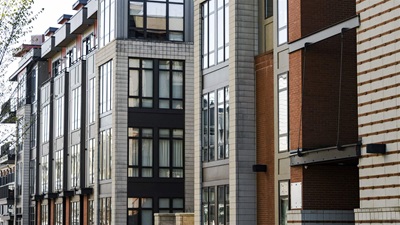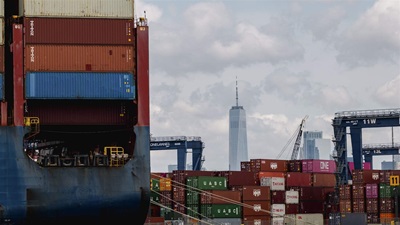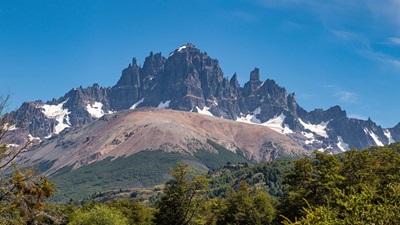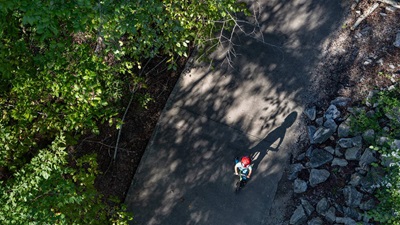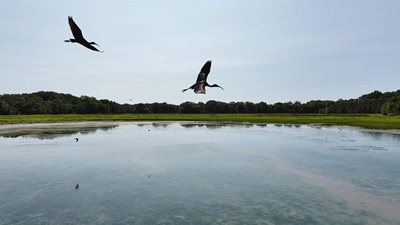The Future of Energy Is a Distributed Grid
Expert discusses strategies to boost electricity reliability and affordability

Audrey Zibelman is no stranger to the challenges of powering modern life. She is an international energy expert whose career spans decades. As co-chair of the New York Public Service Commission, she helped to establish Reforming the Energy Vision (REV), a comprehensive policy reform of the electric industry to support a decarbonized grid. Zibelman also served as CEO of the Australian Energy Market Operator, where she helped to launch the country’s national energy plan, including its distributed energy resources (DERs) strategy. DERs are technologies—such as batteries, rooftop solar, and smart thermostats—that generate, manage, and store energy close to where it is used. They help to reduce dependence on large-scale energy generation, alleviate grid congestion, and cut energy costs for consumers.
Zibelman is now co-chair of The Pew Charitable Trusts’ DERs Advisory Council, a bipartisan group of energy experts helping to develop a policy playbook to scale DERs in the U.S. These technologies took center stage at the second annual “Climate Night Live” event in New York City, which Pew hosted in partnership with Canary Media and the MacArthur Foundation.
At the event, journalist Elisa Wood, who covers DERs in depth, interviewed Zibelman about the challenges facing the U.S. power grid and the role that DERs can play in the nation’s energy future.
This interview has been edited for clarity and length.
Elisa Wood: You led one of the first major policy reforms to promote distributed energy: New York’s REV. That was about a decade ago. What were you seeing back then that made you want to focus on distributed energy?
Audrey Zibelman: What made the power system competitive in the 1990s was that there was a lot of excess generation because utilities had overbuilt the system but demand was flattening. That started catching up to us, and we discovered that we couldn’t attract investment in generation, so we started experimenting on how to leverage demand. Traditional industry thinking at that time was that demand is a fixed value. Consumers need a certain amount of power at various times each day, and that can’t be changed.
But when I was at PJM (a wholesale electricity market operator), we saw demand not through this standard lens, but instead as a valuable resource that we could influence through innovation. So we started thinking about how we could use DERs and other technologies to manage demand and limit strain on the grid. And we quickly saw that demand actually responded better to grid needs than generation, which in the industry we always assumed was more flexible. Reducing demand on the grid by moving people to distributed generation was faster and more dependable than trying to boost centralized generation and allowed us to increase overall supply and lowered costs.
That is the kind of change we should be investing in because it’s better for consumers.
Are we where you thought we would be by now in the U.S., or are we behind in terms of distributed energy?
I don’t think we’re nearly close to where we should be or where we can be. What has to happen is, you have to change the mindset of consumers. One of the things that I’m excited about in the work we’re doing with Pew is the recognition that unlocking the potential of DERs is not a technology issue. Instead, it’s a regulatory market issue and a mindset issue. And those are the things we need to be working on to get to scale.
What do we need to do policy-wise in the U.S.?
We should think about policies that actually say, “Deploying DERs at scale is in the public interest, and everybody should have access to them. DERs should not be left to chance, individual wealth, or building ownership structure.”
What are the key challenges to electricity affordability and reliability that we’re facing today?
The rapid increase in energy demand created by data centers and AI and electrification is unprecedented. We know it’s very difficult to build infrastructure in this country, but we have to be thinking about how we’re going to meet this new demand. At the same time, we have a lot of aging infrastructure. We have a lot of generators that have to retire. There’s a huge amount of capital to spend, and that’s what’s creating the pressure on rate increases universally.
Audience member: What jurisdictions are doing things you like, especially when it comes to distributed energy?
I think some really exciting things are going on. Virginia has passed legislation around mandating virtual power plants. And so have Colorado and Minnesota.
I’m also quite excited about what we’re doing in Australia because the distribution utilities are working with network operators to maximize the use of distributed energy resources in order to reduce the cost of energy for everyone and make the grid more resilient and efficient. I think having those kinds of objective outcomes of where you want to go moves things faster.
Elisa Wood: What can we do about utility regulation that would make it easier to have distributed energy?
One thing that we’ve done well in this country—and it’s why renewable energy has taken off—is setting targets of where we want to be. I think there’s an opportunity for regulators to similarly use science and evidence to set targets for where we want to go with distributed energy. And then you can develop programs and design rates and markets to get us there.
What do we want the grid to look like by 2040?
I envision a grid where everybody has access to or is using distributed energy resources, whether it’s rooftop solar or batteries or other types of devices, to make the whole grid more efficient and cleaner. And this is balanced with larger-scale generation resources that are also cleaner.
The Pew Charitable Trusts’ energy modernization project aims to identify policy pathways to accelerate the adoption of distributed energy technologies across the United States. Learn more.





